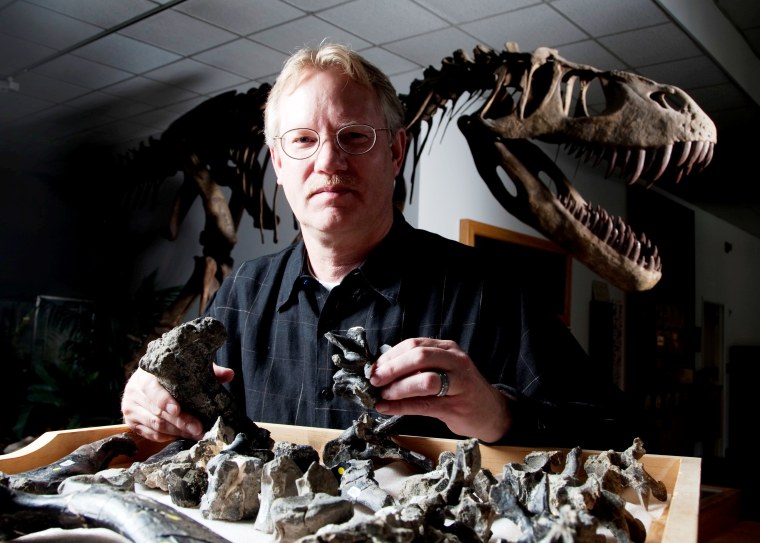Paleontologists say analysis of a vast collection of broken dinosaur bones unearthed in southeast Utah indicates that they were trampled by other dinosaurs shortly after they died.
Brigham Young University scientists have spent years analyzing more than 4,000 bones from a quarry just west of Arches National Park.
They say the bone collection represents at least 67 individual dinosaurs from eight different species. The fact that there were dinosaurs of all different ages and sizes indicates a mass die-off. The cluster of bones was found near the shore of an ancient lake bed, suggesting that drought was the cause of death.
BYU professor Brooks Britt, lead author of a study appearing in the journal Palaeo, said that after the die-offs, other dinosaurs stomped through the carcasses as they passed through, snapping most of the bones at the site. Some were crushed multiple times.
The tipoff to the trampling was the fact that most of the bones sustained angled "greenstick" fractures, which typically occur in fresh bones.
"Some of these bones were almost 5 feet long, and they are green, and you really have to work hard to shatter bone that's still green," Britt said in a BYU news release. "That means the big boys were stepping on those things. Those would have been audible, big snaps."
Britt and his colleagues surmised that the "big boys" in this case were probably huge, plant-eating sauropods and iguanodontids that lived more than 100 million years ago during the Early Cretaceous Period.
The bones are now housed at BYU's Earth Science Museum.
